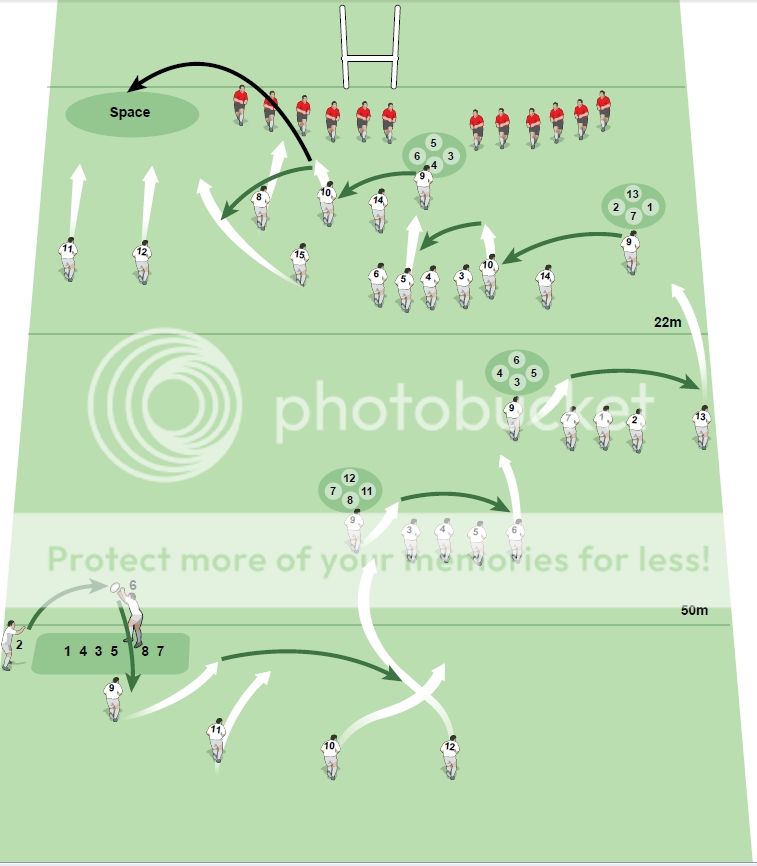icsulescool
Academy Player
- Joined
- Aug 23, 2010
- Messages
- 46
- Country Flag
- Club or Nation

Hi.
From what I know, the direct opponents in rugby union for each position are: #1 -> #3, #2 -> #2, #3 -> #1, #4 -> #5, #5 -> #4, #6 -> #7, #7 -> #6, #8 -> #8, #9 -> #9, #10 -> #10, #11 -> #14, #12 -> #13, #13 -> #12, #14 -> #11, #15 -> #15. So, I guess that usually no. 1 will tackle no. 3 and so on. Of course, during the game players don't always stay in their ideal position on the field and often the direct opponents aren't those I wrote above (btw, are they all correct?).
Which are the second and the third direct opponents for each position? If the opponent flyhalf will miss the tackle who will try to tackle (most often)? Maybe for some positions isn't a "pattern", but for those where it is, I would like to know ...
From what I know, the direct opponents in rugby union for each position are: #1 -> #3, #2 -> #2, #3 -> #1, #4 -> #5, #5 -> #4, #6 -> #7, #7 -> #6, #8 -> #8, #9 -> #9, #10 -> #10, #11 -> #14, #12 -> #13, #13 -> #12, #14 -> #11, #15 -> #15. So, I guess that usually no. 1 will tackle no. 3 and so on. Of course, during the game players don't always stay in their ideal position on the field and often the direct opponents aren't those I wrote above (btw, are they all correct?).
Which are the second and the third direct opponents for each position? If the opponent flyhalf will miss the tackle who will try to tackle (most often)? Maybe for some positions isn't a "pattern", but for those where it is, I would like to know ...









